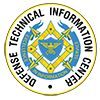While modernization in capability development can be a gradual and time-consuming process, it is essential to keep pace with up-to-the-minute technology and evolving threats. Stagnancy is too great a risk to Warfighters’ lives. This is why the Joint Program Executive Office for Chemical, Biological, Radiological and Nuclear Defense (JPEO-CBRND) is committed to continuously refining and modernizing capabilities to ensure their effectiveness in CBRN-contested environments. These upgrades require keeping pace with advances in technology and integrating those improvements in the capabilities to keep warfighters safe and ready.
An example of this modernization can be found in the most recent, final testing of the Nuclear, Biological and Chemical Reconnaissance Vehicle (NBCRV) Sensor Suite Upgrade (SSU), or the NBCRV SSU, which resulted in a contract with Teledyne FLIR and will soon bring much-improved CBRN defense vehicle upgrades to Warfighters.


